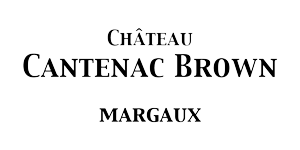The anatomy of the stemmed glass
The stemmed glass consists of three main parts: the chalice, the stem and the base.
The chalice
The different parts of the chalice are :
- Rim: the contour of the opening or rim of the upper part of the glass on which the lips rest. There are thick, medium and thin rims. The fineness of the rim is a sign of quality for a wine glass. A rim that has been laser cut after molding will be thinner than a rim that has not been molded.
- Chimney: the part of the glass that forms the top of the glass and whose diameter generally narrows towards the top. The wider the chimney, the more aromas can escape and the more air can enter. Conversely, if it is too narrow they will remain trapped, saturating the glass.
- Shoulder of the glass: the widest part of the chalice, it is generally used as a marker for the upper limit of the level of wine served. It is the junction between the chimney and the goblet. The curve of the shoulder can be more or less important, with an angle more or less frank or rounded.
- Goblet: part of the bottom of the goblet, where the wine rests directly. Depending on its diameter, a wine will benefit from a more or less rapid oxygenation.
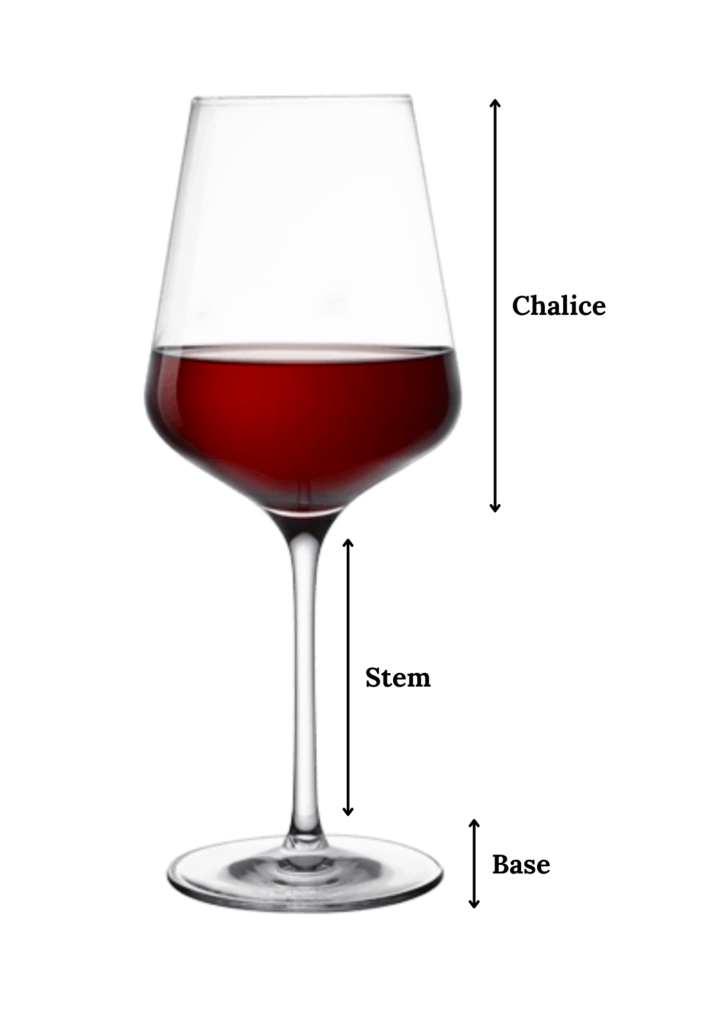
The stem
The stem (or foot or leg of the glass), connects the base to the cup. And the top of the stem is called the knob, which is the junction between the chalice and the stem. Once thick, glass stems have become thinner as glassmaking has progressed.
The base
La base (aussi appelée socle ou cuvette), est toujours plate ou conique. Afin que le verre soit stable, son diamètre varie selon la taille du gobelet du verre, mais aussi pour des raisons esthétiques.
How to hold a stemmed glass?
1°: The classic way to hold a stemmed glass: by the stem
- Position your fingers on the bottom half of the stem. Your middle finger should be just above the base.
- Only these three fingers should be touching the glass stem directly. Your pinky and ring finger should rest naturally on the base.
- This is the classic way to hold a stemmed glass.
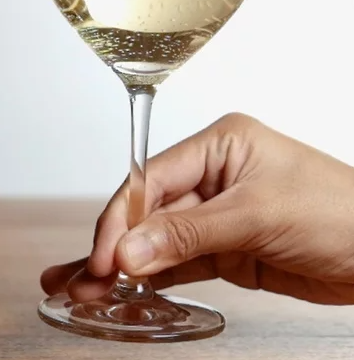
2°: By the stem with two fingers
- Take the rod with your thumb and forefinger. Wrap your index finger around one side of the stem and support the other side with the tip of your thumb.
- Always place your hand on the bottom of the stem.
- The other three fingers of your hand should be curled over your palm as if you were closing your fist loosely. Generally, they should not touch the base, but it’s okay if they brush against it.
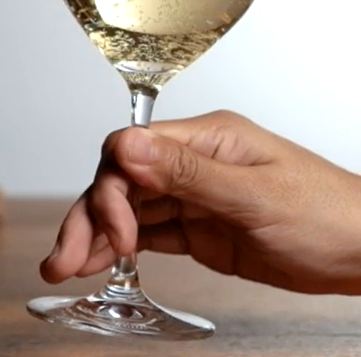
3°: By the bottom of the stem
- Hold the stem of the stemmed glass just above the base using only your thumb and index finger.
- These two fingers should both hold the stem of the glass and lightly touch the base.
Extend your middle finger forward under the base, touching it to support the glass from below. - Let the remaining two fingers assume a natural position. You can curl them over your palm or let them follow your middle finger naturally.
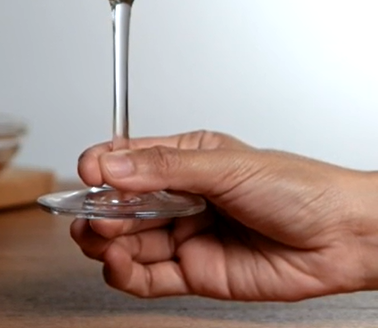
4°: By the base
- Press it down with your thumb. Support the base of the stemmed glass from underneath with your middle and index fingers and place your thumb on the top of the glass.
- When using this technique, no finger should touch the stem of the glass.
Your index, middle, ring and pinky fingers should be slightly curved against your palm. - Use the top of your index and middle fingers to support the underside of the base.
Although this grip is socially correct, it is less stable than the others. Practice alone and wait until you have mastered it before using it with others.
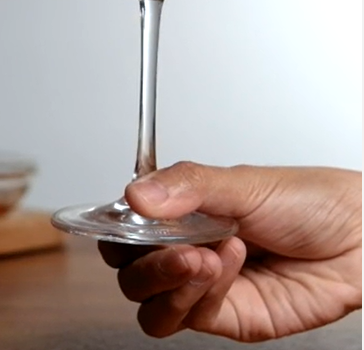
Beware: never touch the chalice!
Never touch the chalice. This is sacrilege for wine lovers, but this social code has scientific, not just aesthetic, reasons.
If you hold a wine glass by the chalice, you can significantly alter the flavor and appearance of its contents. This is because when you hold the chalice, the heat from your hands quickly warms the wine in the glass. This is especially problematic when drinking white or sparkling wine, as they taste best when served chilled. The problem is a little less pronounced when you drink red wine, but even red wine is better when it is slightly cooler than room temperature.
Also, if you hold a stemmed glass by the chalice, you can leave fingerprints on it, making it less elegant. Your fingers and the marks they leave can also make it harder to see the color and/or transparency of the wine.
